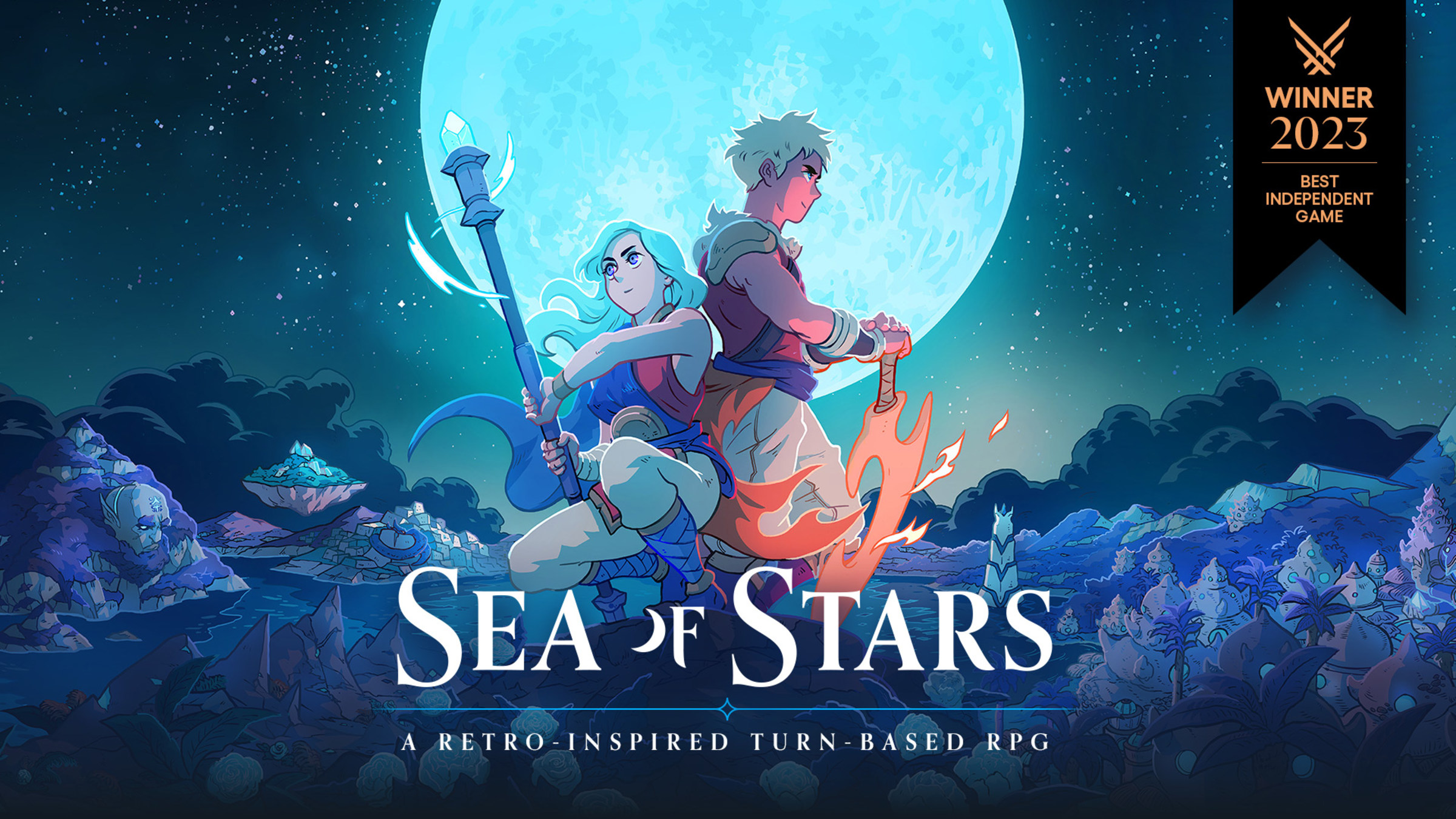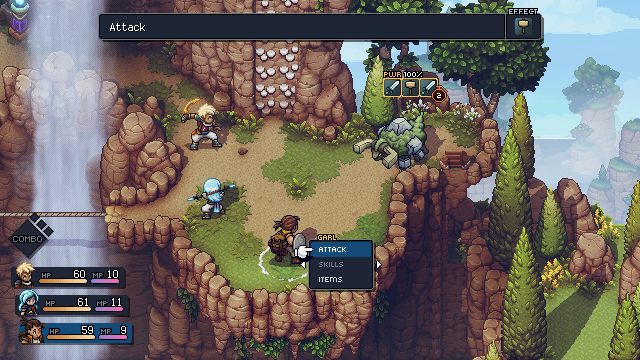
Visuals and Atmosphere: Crafting a Beautiful World
One of the most immediate strengths of this RPG is its striking art style. From richly colored landscapes to intricate environmental details, every corner of the world feels alive and meticulously crafted. Sabotage Studio has done an impressive job creating visuals that don’t simply pay homage to pixel art but elevate it, showcasing a mastery of color palettes, animations, and scene design. The game’s settings range from quiet forests to mysterious temples, each location steeped in atmosphere and exuding an adventurous charm that invites players to explore.
The lighting effects and the transitions from day to night add a unique layer of immersion. Sunsets, starlit skies, and warm morning light all bring a sense of passage and continuity to the world, setting a mood that few pixel-art games can achieve. This attention to detail makes exploration rewarding, and the depth of the visuals ensures players remain captivated. However, some players have noted that despite the artistic beauty, certain areas start to look repetitive. In a long-form RPG, these visual redundancies may pull players out of the world’s magic, especially after spending hours wandering similar landscapes.
Gameplay: A Modern Take on Turn-Based Combat
At its core, Sea of Stars respects classic RPG combat systems while making clever improvements. The turn-based mechanics feature timing-based inputs that add a rhythm-like quality to battles, rewarding timing and precision beyond simple strategy. The system requires players to press specific buttons at key moments during attacks or defenses, adding a fresh layer of engagement that keeps combat from becoming monotonous. This timing mechanic also means players can have a greater influence on their success, rather than relying solely on character stats or item usage.
The combat also introduces “lock” mechanics where certain enemies have special attacks that can be interrupted by hitting them with specific attack types. This adds a strategic depth that encourages players to consider their team composition and attack selection carefully. While this feature makes combat dynamic, it can also feel restrictive. Players are occasionally forced to use specific abilities, which may clash with their preferred playstyle. For those who enjoy flexible combat systems, this might come across as limiting, even if it adds to the game’s complexity.
Story and Characters: A Tale of Light and Darkness
The narrative follows two protagonists, Zale and Valere, who wield sun and moon powers respectively and embark on a journey to stop an ancient evil. The game weaves themes of light versus darkness with personal sacrifice and friendship, reminiscent of classic RPGs. The story is bolstered by a cast of characters that bring levity, humor, and emotional depth, helping to round out the main storyline with engaging subplots.
While the story provides an epic sense of adventure, it sometimes leans into predictable territory, especially for seasoned RPG players. Certain tropes, such as the “chosen hero” and “ultimate evil,” feel familiar, though they’re handled with care and are enhanced by the quality of the dialogue and character development. This familiarity may appeal to fans of classic RPG storytelling, but some players may find the story’s reliance on traditional themes lacks surprise. Yet, for those drawn to classic RPG narratives, the game delivers a tale that is heartwarming and compelling, with a few plot twists that keep the journey interesting.
User Reception and Community Feedback
Overall, Sea of Stars has been well-received by the gaming community, especially by those who grew up playing RPGs in the ’90s. Players have praised its nostalgic atmosphere, engaging combat, and the sense of adventure it offers. It’s also garnered appreciation for not relying heavily on grinding or repetitive battles, a common pitfall in retro RPGs. Instead, the game emphasizes thoughtful encounters and exploration, a design choice that has resonated positively with fans who enjoy a balance of action and story without excessive grinding.
However, feedback hasn’t been universally positive. Some players feel the pacing can be slow at times, especially during segments with backtracking or puzzles. While the puzzles themselves are generally rewarding and well-designed, some players have noted that they occasionally disrupt the story’s flow, creating lulls in the narrative’s momentum. Additionally, for those who prefer faster-paced RPGs, the turn-based combat system, even with its rhythmic elements, may feel less engaging over time.
Soundtrack: A Symphony for the Soul
The soundtrack of Sea of Stars is a standout feature, composed with both emotional depth and adventurous spirit. The music enhances every scene, from the high-energy battle themes to the tranquil melodies that accompany exploration. Featuring tracks from famed composer Yasunori Mitsuda, the music strikes a balance between nostalgia and freshness, transporting players into an immersive world while echoing the scores of RPG classics.
While the soundtrack is widely praised, some players have mentioned a slight repetition in certain tracks, particularly in areas where players spend extended time. While this repetition might detract for those who notice it, the majority of players agree that the soundtrack remains a high point of the game, serving as both a tribute to classic RPG music and a vibrant score in its own right.
Innovations and Shortcomings
Sea of Stars sets itself apart by introducing several quality-of-life features often missing in retro-inspired RPGs. It includes a fast-travel system that feels well-integrated, allowing players to revisit areas without cumbersome backtracking. Additionally, the game provides multiple accessibility options, which is a welcome addition to a genre that can sometimes alienate newcomers with steep learning curves.
Still, the game isn’t without its flaws. While it improves on traditional turn-based mechanics, some players feel that its adherence to retro RPG formulas prevents it from standing out entirely on its own. Certain aspects, such as the linear progression and familiar storyline, can feel too safe for players seeking innovation. For these players, the game might feel less memorable among recent RPGs that push the genre’s boundaries.
Final Verdict: A Journey Worth Taking
Sea of Stars delivers an experience that embraces nostalgia while adding meaningful improvements that appeal to modern audiences. Its stunning visuals, refined combat system, and well-crafted soundtrack create an RPG experience that feels both fresh and familiar. While it may not reinvent the wheel, it pays homage to its inspirations with a clear respect and understanding of what made classic RPGs special, from engaging combat to a heartfelt story.
For longtime fans of turn-based RPGs, the game offers a return to the cherished days of pixelated adventures without the frustrating mechanics of old. And for newcomers, it provides an accessible entry point into the genre, showcasing the beauty of turn-based storytelling and exploration. Although it may have some pacing issues and a storyline that leans into familiar tropes, the game remains a compelling journey that captures the spirit of adventure, friendship, and heroism.
In a landscape filled with innovative and complex RPGs, Sea of Stars shines by blending the warmth of nostalgia with thoughtful updates, making it a charming and worthwhile addition to any RPG lover’s library.
